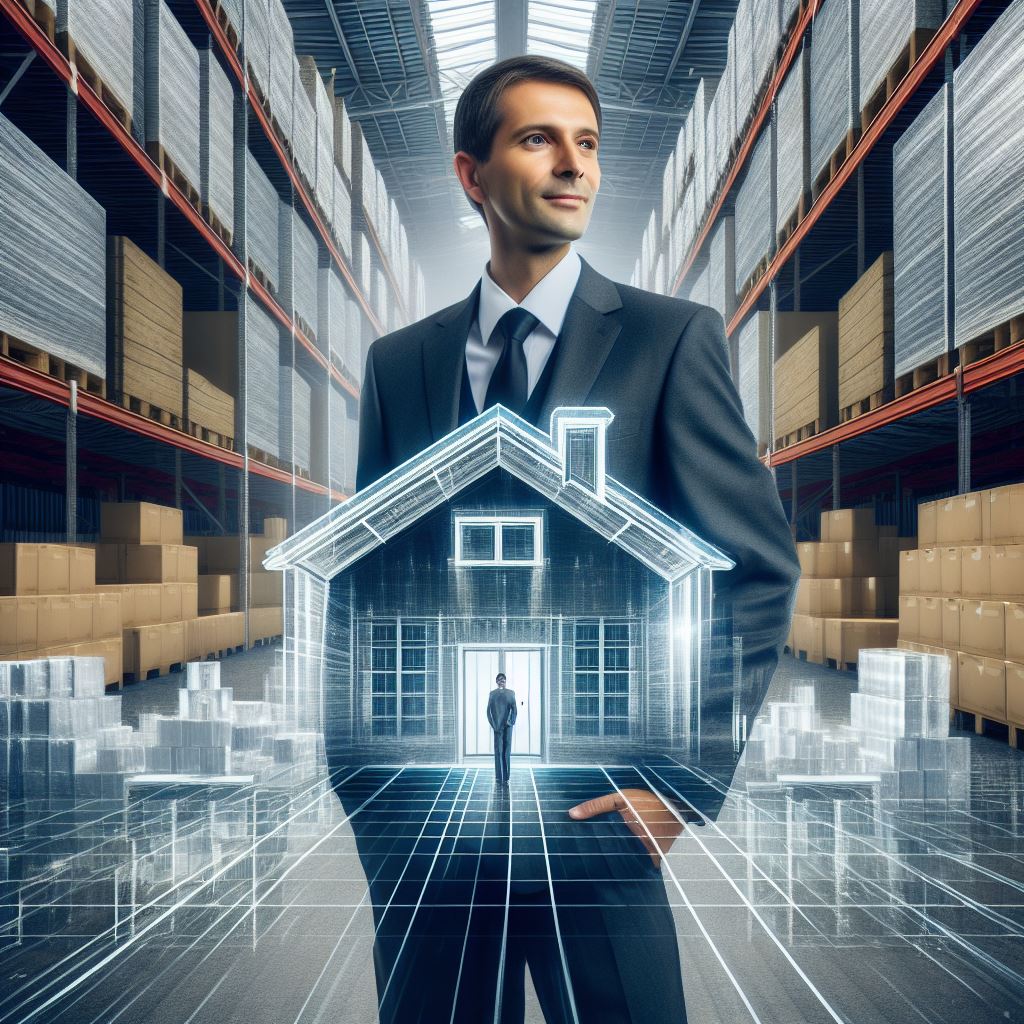Introduction
Smart buildings are revolutionizing the real estate sector by incorporating advanced technology into their design and functionality.
These buildings are equipped with intelligent systems that enhance efficiency and comfort for occupants.
The importance of smart buildings in the real estate sector cannot be overstated.
Not only do they offer a more sustainable and eco-friendly option, but they also provide cost-saving benefits to both building owners and occupants.
The growing trend of incorporating smart technology in buildings is driven by the desire for increased energy efficiency and improved occupant experience.
By integrating smart systems, buildings can optimize energy consumption, monitor and control indoor air quality, and provide personalized and convenient features.
Smart buildings leverage the power of the Internet of Things (IoT) to connect various devices and sensors throughout the building, enabling seamless communication and automation.
This connectivity enables building management systems to collect and analyze data, allowing for proactive maintenance and better decision-making.
Moreover, smart buildings prioritize safety and security by integrating surveillance systems, access controls, and emergency response mechanisms.
As the demand for smart buildings continues to rise, real estate developers and investors are recognizing the value and potential return on investment offered by these innovative structures.
The future of the real estate sector in the United States is undoubtedly being shaped by the adoption of smart buildings.
They not only offer a competitive advantage but also contribute to a more sustainable and intelligent urban environment.
With the integration of smart technology, buildings are set to become more interactive, efficient, and adaptive to the needs and preferences of their occupants.
Benefits of Smart Buildings
Energy efficiency and cost savings
Smart buildings offer numerous benefits that contribute to the evolution of US real estate.
One of the most significant advantages is increased energy efficiency and cost savings.
Traditional buildings often waste energy due to inefficient systems.
However, smart buildings utilize advanced sensors and automation to optimize energy consumption.
By continuously monitoring and adjusting energy usage, these buildings reduce wasted energy and decrease utility expenses.
The implementation of intelligent technology results in substantial cost savings for building owners and tenants alike.
Improved comfort and well-being
Moreover, smart buildings prioritize the comfort and well-being of occupants.
They feature smart climate control systems that maintain optimal temperature settings throughout the building.
These systems adapt to individual preferences and can be remotely controlled, ensuring a comfortable environment for everyone.
Indoor air quality is another important aspect of occupant comfort.
Smart buildings integrate air quality monitoring systems that constantly assess and improve indoor air conditions.
These systems detect pollutants, regulate ventilation, and filter air, creating a healthier environment for occupants.
By providing high-quality indoor air, smart buildings promote better health and well-being.
Increased security and safety measures
In addition to energy efficiency and comfort, smart buildings enhance security measures.
They are equipped with advanced surveillance and access control systems, ensuring the safety of occupants and property.
These systems not only deter potential threats but also provide valuable data for analyzing building security.
Fire safety is a top priority in smart buildings. They are equipped with state-of-the-art fire detection and prevention systems.
These systems detect smoke, heat, or fire and trigger immediate responses to minimize potential damage and ensure the safety of occupants.
Additionally, smart buildings implement real-time notification and emergency response systems that enable swift and efficient emergency management.
Overall, the integration of smart technologies in buildings revolutionizes the US real estate industry.
The energy efficiency and cost savings associated with smart buildings contribute to a sustainable future.
Improved comfort and well-being create a more pleasant and productive environment for occupants.
Enhanced security and safety measures provide peace of mind and safeguard lives and assets.
As a result, the demand for smart buildings in the US real estate market continues to grow.
Building owners and developers recognize the long-term benefits of investing in smart building technologies.
Not only do smart buildings provide a competitive advantage, but they also align with the increasing focus on sustainability and occupant satisfaction in the industry.
In essence, smart buildings offer a multitude of benefits that make them the future of US real estate.
From energy efficiency and cost savings to improved comfort and increased security measures, smart buildings redefine the standards of modern buildings.
As the technology continues to advance, the integration of smart buildings in the real estate market will become more prevalent, ultimately shaping the future of our built environment.
Read: US Hotel Sector: 2024 Market Analysis
Technological Innovations in Smart Buildings
Smart buildings represent the future of real estate in the United States, thanks to various technological innovations.
These advancements revolutionize the way buildings operate, making them more intelligent, energy-efficient, and sustainable.
In this section, we will explore the key technological innovations in smart buildings that are driving the future of US real estate.
Internet of Things (IoT) integration
One of the most significant technological advancements in smart buildings is the integration of the Internet of Things (IoT).
This involves connecting various devices and systems within the building to enable seamless communication and data exchange.
- Connecting devices and systems for seamless communication: IoT integration allows different devices, such as thermostats, lighting systems, and security cameras, to communicate with each other, resulting in a more cohesive and interconnected building.
- Data collection and analysis for optimization: IoT-enabled devices collect real-time data on occupancy, energy usage, and environmental conditions.
his data can be analyzed to optimize building operations, improve energy efficiency, and enhance occupant comfort. - Remote monitoring and management capabilities: IoT integration enables remote monitoring and management of building systems.
Maintenance teams can remotely monitor equipment performance, identify issues, and proactively address them, reducing downtime and enhancing operational efficiency.
Artificial Intelligence (AI) integration
Another vital technological innovation in smart buildings is the integration of Artificial Intelligence (AI).
AI algorithms and machine learning techniques enable buildings to learn and adapt autonomously, resulting in more efficient management and enhanced user experiences.
- Machine learning for predictive maintenance: AI algorithms analyze data from various sensors to detect patterns and anomalies in equipment performance.
This enables predictive maintenance, where potential failures can be identified and addressed before they occur, reducing downtime and maintenance costs. - Intelligent automation and decision-making: AI integration allows buildings to automate routine tasks, such as adjusting HVAC systems based on occupancy or optimizing energy usage.
AI algorithms can make intelligent decisions to optimize building operations and enhance energy efficiency. - Personalized user experience and customization: AI-powered systems can learn occupants’ preferences and adjust building settings accordingly.
This personalization enhances occupant comfort and satisfaction, creating a more enjoyable and productive environment.
Renewable energy integration
Smart buildings also prioritize renewable energy integration to reduce reliance on traditional energy sources and promote sustainability.
- Utilization of solar panels and green energy sources: Smart buildings incorporate solar panels to generate renewable electricity.
These buildings also harness other green energy sources, such as wind or geothermal energy, to further reduce their environmental impact. - Energy storage systems for peak load management: To manage energy demand efficiently, smart buildings utilize energy storage systems.
Excess energy generated during off-peak periods can be stored and used during peak demand, reducing reliance on the grid and optimizing energy usage. - Integration of electric vehicle charging infrastructure: As electric vehicles become more prevalent, smart buildings integrate electric vehicle charging infrastructure.
This allows building occupants to conveniently charge their vehicles while promoting the adoption of electric transportation and reducing carbon emissions.
In fact, technological innovations in smart buildings, including IoT integration, AI integration, and renewable energy integration, are driving the future of real estate in the United States.
These advancements enhance building efficiency, sustainability, and user experiences, making smart buildings a promising investment opportunity in the evolving real estate market.
Read: Remote Work Effect on US Office Market

Industries Embracing Smart Buildings
The integration of smart technologies into buildings is not limited to a particular industry.
In fact, various sectors are now embracing the concept of smart buildings due to the numerous benefits they offer.
Let’s explore the different industries that are actively adopting smart buildings.
Commercial real estate sector
Office spaces and corporate campuses
The commercial real estate sector is one of the pioneers in adopting smart buildings.
Office spaces and corporate campuses are integrating smart technologies to improve energy efficiency, enhance security systems, and optimize space utilization.
These advancements enable businesses to create modern and productive work environments.
Retail establishments and shopping centers
Retail establishments and shopping centers are leveraging smart building technologies to enhance the shopping experience.
From intelligent lighting systems that adjust according to natural light to climate control systems that optimize energy consumption, these technologies contribute to a comfortable and sustainable shopping environment.
Hotels and hospitality industry
In the hospitality industry, smart buildings play a crucial role in enhancing guest experiences and hotel operations.
From automated check-ins to personalized room settings, smart technologies enable hotels to provide exceptional service while optimizing energy usage and resource management.
Residential real estate sector
Smart homes and condominiums
Smart homes and condominiums are becoming increasingly popular among homeowners.
These smart buildings offer advanced features such as integrated home security systems, remote-controlled appliances, and energy management systems, providing convenience and energy efficiency.
Apartment complexes and multi-family units
Apartment complexes and multi-family units are also embracing smart building solutions.
These buildings integrate technologies for energy monitoring, centralized security systems, and smart access control, ensuring the safety and comfort of residents while minimizing operational costs for property management.
Senior living communities
Smart buildings cater to the unique needs of senior living communities.
With features like remote healthcare monitoring systems, emergency response systems, and smart home automation, these buildings provide a safe and comfortable environment for elderly residents, enabling them to maintain their independence while ensuring their well-being.
Government and public buildings
Smart city initiatives
Governments worldwide are implementing smart city initiatives, which involve transforming various public buildings into smart buildings.
These initiatives aim to improve energy efficiency, optimize urban services, and enhance the overall quality of life for citizens.
Public health facilities and educational institutions
Public health facilities and educational institutions are embracing smart building technologies to enhance operations and improve services.
From smart lighting and automated climate control to advanced security systems and digital learning environments, these buildings ensure efficient resource usage and provide a conducive environment for students and patients.
Transportation hubs and airports
Smart buildings are revolutionizing transportation hubs and airports, transforming them into connected and efficient spaces.
These buildings incorporate smart parking systems, real-time passenger information systems, and energy-efficient infrastructure, enhancing the overall passenger experience while reducing operational costs.
In short, smart buildings are being embraced by various industries, including commercial real estate, residential real estate, and government/public buildings.
The integration of smart technologies enables businesses to optimize operations, enhance energy efficiency, and provide better experiences for occupants.
As the future of real estate in the US, smart buildings are set to revolutionize the way we live, work, and interact with our built environment.
Read: 2024 Trends in US Mixed-Use Properties
Challenges and Considerations
High implementation costs and return on investment
Implementing smart building technologies can be expensive, requiring significant upfront investments.
The return on investment may take time to materialize as the cost savings from energy efficiency and improved operations accumulate.
Organizations need to carefully evaluate the financial feasibility and long-term benefits of implementing smart features.
Data security and privacy concerns
With the increasing amount of data generated by smart buildings, there is a growing need to address data security and privacy concerns.
Protecting sensitive information and preventing unauthorized access must be a top priority.
Using encryption, firewalls, and robust authentication protocols are crucial to safeguarding data.
Need for skilled professionals and technical expertise
Implementing and managing smart buildings requires skilled professionals with expertise in IoT, data analytics, and building automation systems.
There is a shortage of experienced personnel in this field, making it challenging to find qualified individuals.
Organizations may need to invest in training programs or collaborate with specialized firms to meet the demand for technical expertise.
Retrofitting existing buildings vs. implementing smart features in new constructions
Retrofitting existing buildings with smart technologies can be complex and pose logistical challenges.
Integration with legacy systems and infrastructure may require significant modifications and upgrades.
On the other hand, implementing smart features in new constructions allows for easier integration and more seamless operation.
Organizations must consider the cost-benefit analysis and decide the most appropriate approach based on each specific scenario.
Despite these challenges, the potential benefits of smart buildings make them an attractive prospect in US real estate.
Organizations must carefully navigate these considerations to leverage the full potential of smart building technologies.
Proper planning, collaboration with industry experts, and ongoing monitoring and maintenance are crucial for successful implementation.
As the technology continues to evolve and costs reduce, the adoption of smart buildings is expected to accelerate in the coming years.
By overcoming the challenges and seizing the opportunities, real estate stakeholders can stay ahead in the competitive market and create sustainable environments.
Read: Urban vs Suburban: US Real Estate Shifts
Future Outlook of Smart Buildings in the US Real Estate
Market growth and investment opportunities
The smart buildings market in the US real estate sector is projected to experience significant growth.
Investors are recognizing the potential of smart buildings and are increasingly investing in this sector.
Existing buildings are being retrofitted with smart technologies to enhance their efficiency and sustainability.
Investment opportunities in smart buildings include energy management systems, IoT devices, and data analytics solutions.
The demand for smart building technologies is driven by the increasing focus on energy conservation and operational cost reduction.
Regulatory and environmental factors driving the adoption of smart buildings
Government regulations aimed at reducing carbon emissions are encouraging the adoption of smart building technologies.
Building codes and certifications are incorporating requirements for energy-efficient systems and sustainable practices.
Smart buildings help meet environmental goals by optimizing energy usage and reducing carbon footprints.
Incentives and subsidies provided by governments further incentivize the implementation of smart building technologies.
Environmental awareness among consumers is also increasing the demand for green and sustainable buildings.
Evolution of smart technologies and integration with other sectors
Advancements in technology, particularly IoT, artificial intelligence, and big data analytics, are driving the evolution of smart buildings.
Integration of smart technologies with other sectors such as transportation, healthcare, and security is creating new opportunities.
Smart buildings are becoming key components of smart cities, contributing to the overall efficiency and sustainability of urban areas.
Connected devices and sensors enable real-time monitoring and control of various building systems for optimal performance.
The future of smart buildings entails seamless integration with smart grids and renewable energy sources to achieve energy independence.
In a nutshell, the future outlook of smart buildings in the US real estate sector is promising.
The market is expected to witness significant growth, attracting investments from various stakeholders.
Regulatory frameworks focused on environmental sustainability are driving the adoption of smart building technologies.
Moreover, the integration of smart technologies with other sectors is creating new opportunities and contributing to the development of smart cities.
The evolution of smart technologies, such as IoT and AI, is enabling real-time monitoring and control, optimizing energy usage, and enhancing building performance.
As the world moves towards a more sustainable future, smart buildings will play a vital role in achieving energy efficiency and environmental goals.
Conclusion
The significance of smart buildings in the US real estate market cannot be overstated.
These innovative structures represent a paradigm shift in the way buildings are designed, operated, and experienced.
By leveraging cutting-edge technologies such as IoT sensors, AI-driven systems, and advanced data analytics, smart buildings enhance efficiency, sustainability, and occupant comfort to unprecedented levels.
As we conclude our exploration of smart buildings, it is crucial to encourage all stakeholders in the real estate industry to fully embrace these transformative technologies.
From developers and property managers to tenants and investors, everyone stands to benefit from the adoption of smart building solutions.
Embracing smart technologies not only provides a competitive edge in the market but also leads to significant cost savings over the long term.
Moreover, by optimizing energy usage and reducing environmental impact, smart buildings contribute to a more sustainable future for all.
It is evident that smart buildings have the potential to profoundly shape the future of US real estate.
Beyond mere trends, they represent a fundamental shift towards more intelligent, efficient, and sustainable built environments.
As technology continues to evolve and new innovations emerge, the possibilities for smart buildings are limitless.
By harnessing the power of connectivity, automation, and data-driven insights, smart buildings will continue to redefine the way we live, work, and interact with the built environment for generations to come.
The journey towards smarter, more resilient cities begins with the widespread adoption of smart building technologies, and the future of US real estate depends on our collective willingness to embrace this transformative change.




